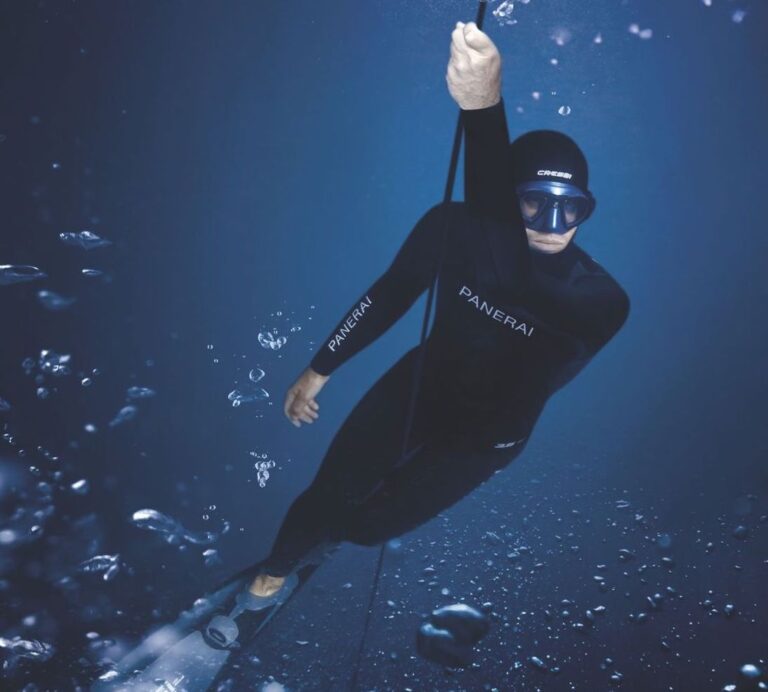A freediving watch is a dive watch that has been designed to be used for freediving and apnea. The watches are usually water-resistant up to 100 meters, making them perfect for diving in the sea or ocean but not so great when it comes to swimming pools. They also tend to have longer lugs than other types of dive watches, which makes them easier to grip underwater. This article will take you through some things you should consider before buying a freediving watch.
Table of Contents
1. What is a freediving watch and what does it do for you
A freediving watch is a type of diving watch that can measure and monitor time, depth, and temperature. It’s important to have one for many reasons, but the most important reason is so you know how long you can stay underwater before ascending back up or risk getting decompression sickness.
Freediving watches are designed to track your dive and make sure you don’t go too deep. The depth tracker will beep when it reaches certain depths, giving divers advance notice that they have reached their limit so they can turn around before swimming deeper than allowed by law.
These devices come in two types: wrist or bulky strap for securing on one’s leg above where water pressure would affect them most. It helps them determine how long an outing should last based on what level of diving experience he/she has attained, as well as monitor his oxygen levels during dives with increased risks such as low visibility underwater or unusual creatures like sharks lurking nearby.
Freedivers also use these to know when they have reached the surface so that they don’t needlessly tucuste their air supply.
Some freediving watches are designed for diving in cold water, which can be more difficult due to things like fogging and ice buildup on the watch’s face cover. Coldwater watches may offer extra features such as an alarm or countdown timer with highly visible hands against a contrasting background.
While there is no one size fits all solution for choosing what type of freediving watch you prefer, it is important to understand how deep your dives go before making any decisions about whether a wristwatch or strap-on device will work best for you!
2. How to choose the right freediving watch for your needs
Freediving is an activity that carries a great deal of risk and requires precision so it’s important to find the right freediving watch for your needs. If you’re just beginning, make sure to wear something simple with no bells or whistles such as this $10 silicone-strap model from Mares. It will be easy on your budget without sacrificing features like stopwatch timekeeping abilities and light functionality at night when diving in low visibility conditions.
For novice divers who want more advanced features, there are models ranging up to over two hundred dollars but all carry similar general functions which include dive timer capabilities – typically set by pressing buttons rather than rotating dials, backlighting (good if traveling), water resistance down to 1200 ft., depth gauge capability, and a bezel design to prevent damage from scratching.
Freediving watches are often divided into two categories: analog or digital. Analog models, which have been around for over 100 years, feature a circular dial with numbers that rotate in increments of seconds while the minutes can be found on an outer ring; these cost less than their more modern counterparts but don’t offer some features such as backlighting and depth gauge capability. Digital freediving watches come in either traditional LCD-style displays or newer eInk screens (which use lower power) – both styles do require charging before diving but they’re not susceptible to scratches like analog models can become after repeated usage underwater. Mares Protrek is known for its excellent selection of digital water-resistant watches that offer a depth gauge, alarm, and countdown timer for freediving.
3. The best freediving watches on the market today
Discover the best freediving watches for your performance needs with this list. Whether you’re a beginner or an expert, these five quality options will be sure to suit all of your needs as they are rated on their durability and features!
Mares Puck: This is one watch that can’t get enough water time because it’s well built and has high visibility in any conditions so make easy work out of spotting those exotic fish below! It also comes equipped with alarm functions that indicate when you should surface if diving from too deep while having increased safety alarms during low tide periods. Plus there’s even a digital compass right on board for navigation at sea or along coastlines. The sensitive touchscreen makes operating the MaresPuck super easy to use.
Suunto D4i Novo: This is a dream watch for freedivers because it tracks your depth, elapsed time, and how deep you can dive before feeling the need to surface. Plus, Suunto even records all of that data in an easy-to-read graph so you can see what depths are best for various activities like scuba diving or snorkeling!
Cressi Leonardo: The Cressi Leonardo also keeps track of those important stats but doesn’t require any buttons on the side which makes it super streamlined and sleek. It has two modes– one with audible alarms when freediving below 30 meters (100 feet) while another mode where there are only visual alerts if needed at greater depths.
Crest CR4: This freediving watch is affordable and easy to use and has a stopwatch function so you can track the time it takes for you to complete your dive, making it perfect for training. It also looks sleek in black!
4. Final thoughts on choosing a good quality, reliable, and affordable model of freediving watch that suits your needs best!
We hope this article helped you with your decision on which freediving watch to buy! Freediving watches come in a variety of shapes, sizes, and colors so it may feel overwhelming trying to choose the right one.
It is important to choose a good quality, reliable freedive watch. Do not underestimate the importance of this investment. The water-resistance and durability of the watch can be determined by looking at how it is constructed and the materials used in its construction.
5.The Bottom Line
Freediving watches are perfect for diving in the sea or ocean but not so great when it comes to swimming pools. The article will take you through some things you should consider before buying a freediving watch and dispel any misconceptions about what they are designed for. If you’re looking for a good starter watch, we recommend going with one that has 100 meters of water resistance as a minimum requirement. So if your priority is spending time at the pool instead of on open waters, this may not be the best choice for you; however, if there’s nothing else holding back from getting into competitive apnea competitions then go ahead!

